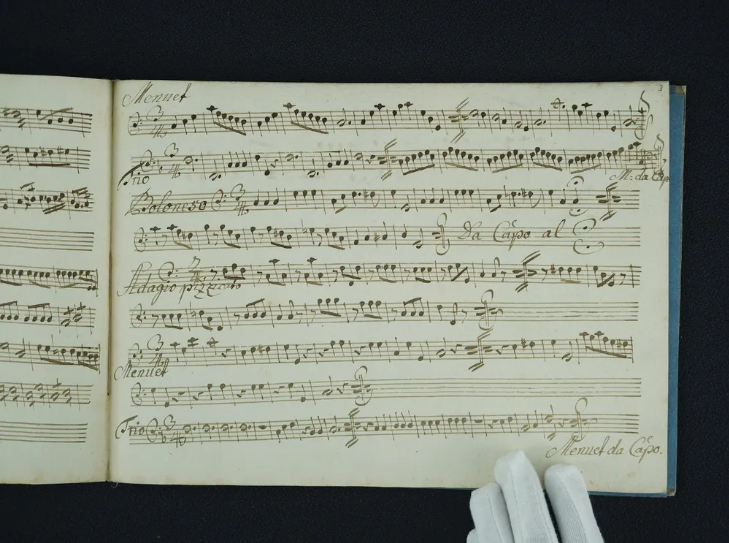
A 12-minute piece of music composed by Wolfgang Amadeus Mozart has been discovered in a library in Germany. Researchers think the composer wrote the previously unknown piece — called Serenade in C — when he was a young teenager.
The composition was hidden in the collections of Germany’s Leipzig Municipal Libraries — some 280 miles north of Salzburg, Austria, where Mozart was born in 1756. By the age of 5, he was a child prodigy who toured Europe performing for royals and aristocrats (贵族). As a teenager, he built a reputation as a composer, spending a few years in Salzburg and Vienna before moving to Italy in 1769.
Mozart probably wrote the recently discovered composition in the mid- to late-1760s, according to a statement from the Leipzig Municipal Libraries. Library researchers were producing an edition of the Köchel catalog, a comprehensive collection of Mozart’s work, when they unexpectedly found a mysterious manuscript containing a handwritten composition in brown ink. The composition is believed to “Wolfgang Mozart.” The handwriting, however, is not Mozart’s, suggesting that the manuscript is a copy of the original composition. Researchers think it was made around 1780.
Serenade in C consists of seven miniature movements (微型乐章) for a string trio (two violins and a bass), according to a statement from the International Mozarteum Foundation, a Salzburg-based nonprofit dedicated to Mozart’s life and work. Researchers say the music fits with other works from the 1760s in style, when Mozart was between the ages of 10 and 13.
The newly discovered Serenade in C has been renamed Ganz kleine Nachtmusik in the Köchel catalog. On September 19, when the new catalog was revealed in Salzburg, a string trio played the rediscovered work. The composition was performed again for the audience at the Leipzig Opera on September 21.
原创编写 版权所有 侵权必究! 每日更新 个性化阅读 英语飙升!
1.1. What can be inferred about Mozart’s early life from the passage?
A Mozart was a child prodigy who began composing music in his late teens.
B Despite being so busy, Mozart still managed to make time for reading.
C Mozart’s early compositions were mainly performed by commoners.
D Mozart was already recognized as a composer during his teenage years.
解析:选D。推理判断题。根据第二段内容,莫扎特5岁时就被称为神童,并且开始在欧洲各国献演,青少年时期就在萨尔茨堡和维也纳建立了作曲家的声誉。这表明他在青少年时期就已经被公认为作曲家。故选D。
2.2. Why do researchers believe the manuscript is not an original composition by Mozart?
A Because it was found in Germany, not Austria.
B Because the handwriting is not Mozart’s.
C Because it was written in brown ink.
D Because it was made around 1780.
解析:选B。细节理解题。根据第三段倒数第二句“The handwriting, however, is not Mozart’s, suggesting that the manuscript is a copy of the original composition.”可知,研究人员认为这份乐谱并非莫扎特本人所写,因为字迹不是莫扎特的。故选B。
3.3. What can we know about the newly discovered piece of music?
A Its performances.
B Its art scene.
C Its inspiration.
D Its feedback.
解析:选A。细节理解题。根据文章最后一段内容可知,9月19日,在萨尔斯堡举行的新版科赫尔目录发布会上,一支弦乐三重奏演奏了这首作品。随后,当地时间9月21日,这首作品在莱比锡歌剧院演奏。故选A。
4.4. What is the main idea of the passage?
A The life story of Wolfgang Amadeus Mozart.
B The history of the Leipzig Municipal Libraries.
C The discovery of a lost Mozart composition.
D The performance of Ganz kleine Nachtmusik.
解析:选C。主旨大意题。文章主要讲述了德国莱比锡市立图书馆发现了一首推测为莫扎特在青少年时期创作的前所未闻的音乐作品。故选C。